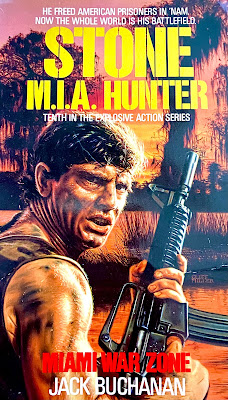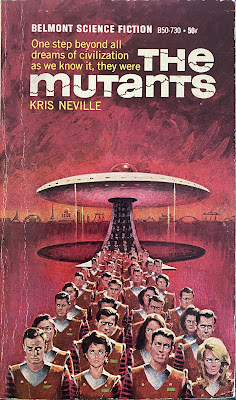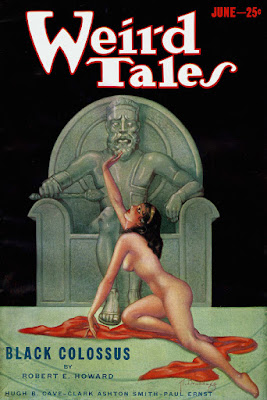It's summer 1992, I'm 16 years old, and taking summer driving school lessons in the bible belt. I can remember it like it was yesterday. I got home around 9pm to a sweltering hot house (we had no AC), turned on our brand new, state-of-the -art Zenith 25” cabinet television with full color and a remote control. I settled into a couch potato mood, pointed the clicker at the screen, and...there's nothing on television that interests me. I'm forced to watch summer syndication, the epitome of boredom. Although it began airing on NBC in 1989, I had never watched Quantum Leap up until that moment. NBC was running a special summer week of show reruns hoping to boost ratings going into a new season in the Fall. There I was with that memorable theme song, the blue lights, Sam Beckett electrifying and morphing into some static time traveling energy. My first experience with Quantum Leap. Oh boy. Quantum Leap was created by Donald P. Bellisario, the television mastermind of hit shows like Magnum P.I. and N.C.I.S. He pitched a science-fiction time-traveling show to NBC and it grew into a sensation, spawning comics, paperbacks, conventions, and five wildly entertaining seasons of television that remain in rotating syndication to this day. The show even gained a reboot in the Fall of 2022 with a new cast.
The idea is rather simple. Dr. Sam Beckett created a time-traveling program, the Quantum Leap Accelerator, ran by a supercomputer deemed "Ziggy". The program is funded by the U.S. Government and housed in the New Mexico desert. The technology is supervised by a whiz named Gushie and a medical doctor named Tina. But, the most charismatic part of the show is Al, an Admiral that partners with Sam during the time travel. In the first episode, Sam steps into the accelerator and vanishes. He awakens to find himself in the past and controlling another person's body. Al can only appear to Sam as a hologram, but provides useful information from a colorful device called Handlink, which is a glorified smart phone.
The accelerator transports Sam into the past, but some sort of supernatural intelligence is perceived to have taken over the whole program. Each episode, Sam learns that the person he is inside of will either die, cause others to die, or experience some sort of tragedy. His job is to avoid these events from happening - righting the wrongs. His insight is that Al can provide odds that whatever he is altering will correct the issue. Once he “fixes” the problem, Sam leaps through time and into another life. But, if he fails to correct the issue, there's a high probability that he will die in the event or be forced to live the remainder of his life as that person. While Sam is controlling the body of the person in the past, that same person is flung into the present day and remains in a waiting room inside of Sam's body. After all of this is fixed, things go back to normal and that person never realizes their course of life was altered. But, each leap Sam makes he is hopeful that he will return to himself, back to his real life, back home.
There are several men's action-adventure novels that have the same vibe as Quantum Leap. Casca, Time Raider, and Richard Blade immediately come to mind. These are fun paperback series titles that create unique adventures with very little backstory required – hero simply solving the problem and moving to the next one. It only made sense for Universal to commission Berkley to create paperbacks affiliated with the show under their imprint Ace. These paperbacks feature different writers, freely able to create new adventures for Sam to leap into. Beginning in 1990, the first of 20 novels was published, although the first two were simply novelizations of television episodes and published separately through Corgi.
The first of the Ace titles (18 total) was published in 1992 and simply called The Novel (aka Carny Knowledge in the UK). It was authored by Ashley McConnell, an American author that contributed to other television tie-in paperback novels in series titles like Buffy the Vampire Slayer, Stargate SG-1, and Highlander. As a fan of the show, and avid paperback reader, I gained a good deal on a Quantum Leap lot of 17 total books, including the The Novel. I thought I would leap into the series with what I consider the first original Quantum Leap paperback story. Thus, the #1 is attributed to the title.
McConnell begins the book like the television show, with Sam glowing blue and awakening to find himself in the body of a 20-something male named Bob Watkins. Sam learns from Al that he is in a small town in Oklahoma during the summer of 1957. Bob Watkins works at a family owned amusement park that has seen its better days. He's sort of a loner, an oddball that many find different and strange. These character attributes will later play a part in the overall plot development. But, for now all Sam learns is that the park's brand new roller coaster will soon derail and seven people die. He's there to somehow prevent this from happening.
The author provides an adequate explanation of the Quantum Leap concept and the characters involved. Additionally, she provides some unique insight into the things happening in the present with Al, Gushie, and Tina when Ziggy begins to malfunction. I thought this additional storyline helped diversify some of the narrative into different thought processes and character perspectives. However, the most unnerving perspective is that of the unknown killer, a man that apparently has some knowledge of the roller coaster and how to modify it into a murder machine. Several separate chapters feature perspective's from the killer's point of view and his memories of prior attacks. This reminded me of Mary Higgins Clark or Charles Runyon's shifting perspective into the mind of a killer.
While the day-to-day activities are slightly tedious – Sam fixing amusement park machines and rides, the park owner's struggles financially, family history accounts – the build-up into the seemingly inevitable accident was exciting. I really enjoyed McConnell's knowledge of the show, specifically citing prior television episodes and Sam's fixation on avoiding a mental hospital (a possible repercussion if he can't avoid the accident). This was really strong storytelling with a noticeable nod to the fans.
McConnell also authored series installments 2-4, and 7 and I'm looking forward to reading those. If you are a die-hard, a casual fan, or completely new to the show, this debut novel is an entertaining crime-fiction read. I love all of the vintage crime-noir pertaining to carnivals and circus acts, and with this story set in 1957 in a sleepy amusement park town, the noir element is easily replicated. The Novel is an easy recommendation.
Buy a copy of this book HERE.





















